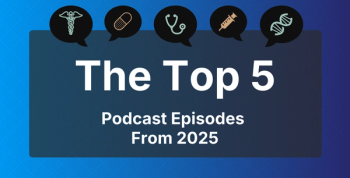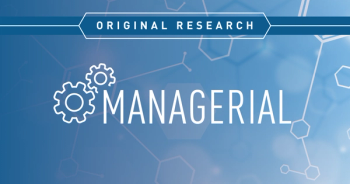
The American Journal of Managed Care
- August 2025
- Volume 31
- Issue 8
- Pages: e212-e220
More Employers Offer Preventive Drug Lists Over Time
Key Takeaways
More large employers with high-deductible health plans with health savings accounts offer preventive drug list benefits over time.
ABSTRACT
Objective: To describe trends in employer preventive drug list (PDL) offerings and associations of employer PDL offerings with employer and workforce characteristics.
Study Design: Observational and cross-sectional descriptive study.
Methods: Using a large administrative health claims database, we studied employer offering of PDLs between January 2005 and December 2017.
Results: The percentage of employers offering PDLs increased between 2005 and 2017, and this was most pronounced among larger employers. In 2017, almost 43.0% (95% CI, 35.7%-50.1%) of employers with 5000 or more insured employees offered PDLs, 4 times more than employers with 50 to 199 employees (10%; 95% CI, 9.3%-10.3%). Among employers with at least 85% of their insured workforce in high-deductible health plans with health savings accounts (HDHP-HSAs; n = 24,632; 8.9%) across the study period, 32.0% offered PDLs in the last benefit year, and 13.0% of non–HDHP-HSA employers did. In adjusted analyses, HDHP-HSA employers with older workforces (OR, 1.45; 95% CI, 1.43-1.48) and those with more chronically ill employees (eg, more than 75% of employees with diabetes) (OR, 1.20; 95% CI, 1.17-1.23) were more likely to offer PDLs than employers with workforces living in poorer neighborhoods (OR, 0.79; 95% CI, 0.77-0.81).
Conclusions: More employers offered PDLs over time, particularly large employers and employers with most employees in an HDHP-HSA. These findings suggest an encouraging trend toward improved health care access among commercially insured adults.
Am J Manag Care. 2025;31(8):e212-e220.
Takeaway Points
Studies have shown that preventive drug lists (PDLs) decrease out-of-pocket payments for medications that patients need for their chronic illnesses and thus can increase medication adherence and decrease risk of disease worsening, especially among poorer, sicker individuals. Employer offering of PDLs over time has been unknown. We show that between 2005 and 2017, employer offering of PDLs increased, particularly among large employers offering high-deductible health plans with health savings accounts.
- In recent years, employers with poorer, older workforces have been more likely to offer PDLs.
- More employers could offer PDLs.
Because employer-based health insurance designs determine member cost sharing and thus access to health care services, they can facilitate or hinder access to quality health care and alter the value of health spending.1 Value-based health insurance arrangements2 can decrease member medication spending3-5 and increase medication adherence,4 potentially improving health outcomes. Lowering out-of-pocket (OOP) costs of prescription drugs needed to treat chronic illnesses is especially important for individuals with prevalent chronic conditions such as diabetes or those exposed to high OOP medication costs, such as individuals in high-deductible health plans with health savings accounts (HDHP-HSAs)6 who pay full medication costs until annual deductibles are met. In 2019, the Internal Revenue Service (IRS) expanded the list of services classified as preventive in HDHP-HSAs to include prescription drugs for certain chronic conditions, which allowed members to receive these drugs as preventive care not subject to deductibles.7 Although this IRS rule has facilitated preventive drug list (PDL) uptake in recent years, employers have previously implemented PDL-type benefit designs.8
PDLs are a particularly promising, broad value-based benefit because they lower or eliminate OOP payments for many generic and branded medications that need to be taken regularly to prevent worsening of chronic conditions and diseases. Study results have shown positive PDL impacts. For example, among patients with diabetes enrolled in HDHP-HSAs, PDL adoption was associated with a relative decrease of approximately $600/year in OOP prescription drug spending per member.9 The PDL benefit also resulted in increased medication use (by six 30-day fills per member per year), which was more than twice as high among lower- than higher-income members.9 Among patients with HDHP-HSAs, transitioning to a PDL benefit resulted in better access to and affordability of inhalers to control asthma.10 With a PDL benefit, there were almost 13% more 30-day fills per member in the following year, and gaining a PDL benefit was associated with a 28% decrease in OOP spending on asthma care. It is important to note that this study also did not show significant changes in asthma exacerbations or differential results by member income.
A recent analysis showed that patients whose employers offered PDL coverage experienced 35% to 55% relative reductions in OOP payments; substantial relative increases in the first year after PDL adoption in 30-day fills for oral antidiabetics (9.5%), antihypertensives (5.7%), and lipid-lowering medications (6.3%); and further increases in the second follow-up year. PDL effects were greater among lower-income patients and greatest by year 2 for lower-income patients in HDHP-HSAs.11 In a large cohort study of commercially insured members with diabetes who experienced an employer-mandated enrollment into a PDL benefit, acute and preventable diabetes complication days decreased by 8.4% in the overall PDL group and by 10.2% among PDL group members from lower-income areas compared with the control group whose cardiometabolic medications continued to be subject to deductibles or co-payments.12
Despite this evidence of PDLs’ potential benefits, the prevalence and uptake of employer-sponsored PDL benefits remain unknown. We described trends in employer PDL offering and assessed associations of employer PDL offering with workforce characteristics. We hypothesized that (1) PDL offering has increased over time, especially among larger employers, and that (2) higher-risk employers who cover poorer, older, and sicker employees would be more likely to provide PDLs than lower-risk employers with younger, healthier employees with higher incomes.
METHODS
Study Population
We drew the study population of more than 100,000 employers providing health insurance to more than 27 million members from a large administrative health claims database with members from all 50 states and Washington, DC, enrolled between January 2005 and December 2017. The database comprises enrollment and demographic data, as well as medical and pharmacy claims for all members. OOP and standardized (to 2017 and across geographies) costs were available for each service received. All members with at least 1 year of enrollment were eligible. To accurately estimate member- and employer-level characteristics, we limited analyses to benefit years in which members were enrolled for the complete 12-month period (73% of all member-years); benefit years were assigned to calendar years by benefit year start (ie, anniversary) dates, which ranged from January 1, 2005, to August 1, 2016. We excluded benefit years in which members had any Medicare Advantage coverage because Medicare Advantage members are not eligible for PDL benefits. We identified all members associated with each employer during a benefit year.
Study Design
We applied an observational study design, examining trends in employer PDL offering by characteristics of employers’ workforce from 2005 to 2017. We also employed 2 cross-sectional descriptive designs. We assessed (1) demographic and clinical workforce and other characteristics of employers offering PDLs and (2) employer characteristics that were associated with new offerings of PDLs.
Measures
Our outcome measure was whether an employer offered at least 1 plan with a core or an expanded PDL (PDL example and summary in eAppendix [
Our source data did not include a direct measure of whether employers offered a PDL in a given benefit year. As in our prior work,11,12 we used deductible and co-payment amounts for all of an employer’s medication claims that were included or not included on the PDLs to impute the presence of a core or expanded PDL benefit (eAppendix). We linked the imputed PDL status of the employer for the year to each month in members’ benefit years (eAppendix). We excluded employers with fewer than 50 members because of the inability to accurately impute PDL status. From here on, PDLs refers to either core or expanded PDLs.
Covariates
We classified employer sizes as 50 to 199, 200 to 999, 1000 to 4999, and 5000 or more enrollees.13 We characterized benefit plans into mutually exclusive categories defined by deductible levels and savings account offerings (eAppendix). We imputed annual deductibles based on medical and pharmacy claims using a validated algorithm previously described in detail.12 Briefly, imputation was based on total in-network individual deductible amounts paid by members who utilized health services and validated against a subset of the sample for which we had exact deductible amounts (eAppendix). We categorized annual deductibles into deductibles below $1000, $1000 to $2499, and $2500 or more. We excluded benefit years that we could not reliably assign to deductible categories (8.2% of 6,588,107 full benefit years). Accounts are options offered with some HDHPs to offset OOP payments using pretax dollars. We identified whether members had an HSA, a health reimbursement arrangement (HRA), or no account.
As in our earlier study,12 using 2010-2014 American Community Survey data at the census tract level,14 we classified members based on their residential zip codes into neighborhood income, race, and education categories.15,16 Using the Johns Hopkins ACG System, which is based on diagnosis and pharmacy codes,17,18 we categorized members as having diagnoses of chronic conditions that would be treated with PDL drugs (ie, diabetes, hypertension, and hyperlipidemia). We categorized members as being at higher risk if they met any of the following criteria likely associated with a greater need for chronic disease medications: older than 45 years, living in neighborhoods with at least 10% residents below the poverty level (ie, poorer), or having a diagnosis of diabetes, hypertension, or hyperlipidemia. We classified employers as being at relatively higher risk if at least 75% of their workforce met the following criteria during a year: older than 45 years, lived in neighborhoods with 10% or more of residents below the poverty level, and had a diagnosis of a chronic condition (diabetes, hypertension, or hyperlipidemia).
We classified employers by region (West, Midwest, South, Northeast) and scope (national, regional, local) based on the predominant residence of their enrollees. We also calculated mean and median total and OOP standard medical and pharmacy spending per member per year (PMPY). Sex, region, HSA/HRA status, and census tract were variables supplied by the vendor; all other covariates and outcomes were derived from enrollment or claims data provided by the data vendor.
Statistical Analyses
Employer PDL offering of PDLs over time. For ease of comparisons across time, we summarized employer characteristics and proportions of employers offering PDLs by 4-year periods, defined by the start of benefit years (2005-2008, 2009-2012, and 2013-2016). We also depicted annual proportions from 2005 to 2017 of employers offering PDLs, by employer size. Because PDLs are especially relevant for members in HDHP-HSAs where medications are subject to deductibles, we identified employers with and without at least 85% of enrollees in an HDHP-HSA, and we characterized both groups of employers by PDL status and workforce characteristics. This rule of characterizing employers by predominant account characteristics is consistent with the approach used by the national health insurer.
Associations of employer characteristics and employer PDL offering. Using generalized estimating equations models clustered by employer, we assessed characteristics of employers that were associated with offering a PDL benefit in the last benefit year in our data (2016-2017), stratified by HSA and non-HSA employers. Variables of interest were employer size, deductible levels (for HSA employers) or the combined variable that characterizes deductible levels and reimbursement accounts (for non-HSA employers), total medical and pharmacy spending (in the year prior to the benefit year in question), and employer workforce profiles (sex, age, poverty level, race, education, and prevalent chronic conditions).
Associations of new employer PDL offering. Finally, we estimated the likelihood of HSA and non-HSA employers offering a PDL in the last benefit year (2016-2017) when they had not offered such a benefit in the second-to-last benefit year (2015-2016). We included the same employer characteristics as in the previous model and assessed associations of employer characteristics in the second-to-last benefit year with newly offering a PDL in the last year.
RESULTS
Sample Characteristics
Across 12 benefit years starting between 2005 and 2016, 133,805 employers (accounting for 27,022,141 members) contributed data. Table 1 [
Employer PDL offering over time. More employers offered PDLs in the 2009-2012 (3.7%) and the 2013-2016 (9.6%) periods compared with the 2005-2008 period (1.0%) (Table 1). Annual PDL offering increased from 0.6% (95% CI, 0.5%-0.7%) of employers in 2005 to 12.7% (95% CI, 12.2%-13.2%) by 2016 (
Multivariate associations of employer characteristics with employer PDL offering. In the 2016-2017 benefit year, several employer characteristics were associated with offering a PDL (
Controlling for other workforce demographic characteristics, HDHP-HSA employers with more male (OR, 1.39; 95% CI, 1.37-1.42), older (OR, 1.45; 95% CI, 1.43-1.48), or employees living in non-White neighborhoods (OR, 1.79; 95% CI, 1.76-1.83) or in neighborhoods with low education (OR, 1.11; 95% CI, 1.09-1.14) were more likely to offer a PDL. Those with more of their workforce living in poorer neighborhoods had a lower likelihood of offering PDLs (OR, 0.79; 95% CI, 0.77-0.81).
Controlling for workforce sociodemographic characteristics, HDHP-HSA employers with workforces with greater prevalence of diabetes (OR, 1.20; 95% CI, 1.17-1.23) or hypertension (OR, 1.04; 95% CI, 1.02-1.07) had a higher likelihood of offering PDLs, whereas those with workforces with greater prevalence of hyperlipidemia (OR, 0.56; 95% CI, 0.55-0.58) had a lower likelihood (Table 2). Among non–HDHP-HSA employers, deductible amounts, employer size, PMPY pharmacy standardized costs, and workforce neighborhood poverty were positively associated with offering a PDL. Controlling for workforce sociodemographic characteristics, non-HSA employers with more of their workforce having diabetes or hypertension were less likely to offer PDLs, whereas those with more of their workforce having hyperlipidemia were more likely to offer PDLs (Table 2).
Multivariate associations of new employer PDL offering. Among HDHP-HSA employers not offering a PDL in the 2015-2016 benefit year, employer offering of plans with very high deductibles ($2500 or more) had the strongest association with newly offering a PDL (OR, 3.87; 95% CI, 3.71-4.03). Among HDHP-HSA employers, those with higher PMPY pharmacy spending in the prior benefit year or workforces with more men, more members living in poorer or in more non-White neighborhoods, or more members with hypertension were more likely to offer a PDL benefit in the 2016-2017 benefit year (Table 2). Higher HDHP-HSA employer medical spending in the prior benefit year or a workforce with more older enrollees, more members living in neighborhoods with lower education levels, or more members with hyperlipidemia were associated with a lower likelihood of newly offering a PDL benefit. Controlling for employer and workforce characteristics, non–HDHP-HSA employers with a larger proportion of their workforce having diabetes or hypertension were also less likely to newly offer PDLs (Table 2).
DISCUSSION
Uniquely using large-scale claims data, we have shown that the percentage of employers offering PDLs increased between 2005 and 2017. The increase was most pronounced for larger employers. In 2017, employers with 5000 or more members were 4 times more likely to offer PDLs than those with 50 to 199 members. Our results also suggest that over time, employers offering mostly HDHP-HSAs who had poorer, older workforces or younger, wealthier workforces increasingly offered PDLs. Controlling for these and other workforce characteristics (eg, sex, education, race), HDHP-HSA employers with more members with diabetes or hypertension were more likely to offer PDLs.
PDLs should benefit mostly those who are vulnerable to high OOP costs for chronic disease medications. Members in HDHP-HSAs must pay payer-determined prices for drugs OOP until they meet their annual deductible amounts. These OOP payments can be barriers to consistently using important medications to treat chronic illnesses. By adding a PDL benefit for members in an HDHP-HSA, employers can substantially reduce or eliminate patient cost-sharing for PDL medications that treat cardiovascular diseases, diabetes, asthma, and other chronic conditions, facilitating adherence to treatment.19
It is not surprising that employer size and insurance benefit designs were most strongly associated with employer PDL offering. Larger employers were more likely than smaller employers to offer HDHP-HSAs,20 and their employees might benefit more from PDLs. We document that a much larger proportion of employers with enrollees in HDHP-HSAs offered PDLs than non–HDHP-HSA employers. This is somewhat reassuring because HDHP-HSAs have been the fastest growing benefit design in the past decade; enrollment in HDHPs among members in all disease categories increased by 5 percentage points a year between 2005 and 2013, and was higher than 50% by 20136 and approximately 50% in 2023,21 whereas HDHP-HSA enrollment increased from 11% to more than 20%.22 Chronically ill members in HDHPs particularly benefit from the positive impacts of PDLs on adherence19 and health outcomes.9,11,12
In 2019, the IRS clarified that certain chronic disease medications can be included as preventive care and thus were exempt from deductibles in HDHP-HSAs.7,23 Our results are consistent with findings from recent employer surveys2-25 that documented continued increasing employer uptake of predeductible coverage of preventive drugs and services for members with chronic diseases in HDHP-HSAs since the 2019 IRS ruling that permitted such coverage.7 Importantly, in a 2021 survey, 81% of respondents for 354 large employers said they would add predeductible coverage for additional health care services if allowed by law.23 This is important given that the higher-stakes rationale for increasing patient cost-sharing for health care is increasingly recognized as a misguided concept.26 In September 2024, a bipartisan Congressional majority endorsed the Chronic Disease Flexible Coverage Act27 to expand options to cover chronic disease services predeductible for members with HDHPs.
HDHPs have lower monthly premiums than non-HDHP plans20 and may attract poorer members. To offer PDLs equitably and preferentially to those who need them more, employers who mostly offer HDHPs and have workforces with fewer financial means or more chronic conditions should preferentially offer PDLs because their workforces need them more than healthier, wealthier workforces.
Continuous medication treatment can prevent worsening of chronic conditions. To realize the benefits of healthier employees, lower absenteeism, and lower health care costs over time,28,29 employers should offer comprehensive PDL benefits to employees who could benefit from them. With approximately 43% of large and 10% of small employers offering PDLs in 2017, there is room for increasing uptake of PDLs, with substantial room for the much larger number of non–HDHP-HSA employers to expand provision of PDL benefits.28,29
Some might consider increased employer drug spending a potential downside of PDL benefits in light of the evolution of drug costs and the role of pharmacy benefit managers in increasing drug costs in the US.30-32 Given that PDLs cover cardioprotective and other medications for which more generic products have become available over time at lower prices,33 it is possible that reduced medication costs may have contributed to the expanded PDL offerings we documented. However, whether employer spending on prescription drugs34 when offering PDLs is ultimately offset by reductions in longer-term medical costs4,35,36 has yet to be studied. A 2021 survey of 36 health plans across the country conducted by AHIP and the Smarter Health Care Coalition25 found that insurance providers added coverage of chronic disease prevention drugs and services to 75% of fully insured and 80% of self-insured HSA products. For 75% of fully insured and 54% of self-insured products, plans reported that reducing or eliminating cost-sharing did not increase premiums or increased premiums by less than 1%; premium increases above 1% were reported for 4% of fully insured and no self-insured products. It is unclear whether premiums might have been stable because OOP costs for non-PDL drugs increased proportionally when cost-sharing for chronic disease prevention drugs was reduced.
Limitations
Our analyses have limitations. Since we had no direct measures, we used claims-based algorithms to impute core and expanded PDL offerings by employers.9 To mitigate misclassification, we excluded small employers (fewer than 50 members) that had fewer claims from which to infer the presence of a PDL. Lack of descriptive information on the employers and the industries they represent23 precluded a more nuanced understanding of employer decisions about PDL benefits. Because we excluded enrollees without full benefit years, the workforce of employers with substantial attrition or turnover may be underrepresented. Because large employers and HDHP-HSA employers were more likely to offer PDLs over time, findings may be driven by the relatively small number of employers with large workforces. We used well-established geographic proxies to characterize workforce socioeconomic characteristics that have been validated in other population-based studies.15,16 However, socioeconomic characteristics and chronic illnesses are correlated in complex ways, and geographic proxies may not fully capture workforce risk for conditions that could benefit from PDL benefits. Our analyses of new offerings of PDL benefits were based on employer characteristics in the year prior. Real-world decisions about benefit offerings may be made with more than 1 year of claims experience. However, most workforce, service utilization, and spending characteristics may be expected to be relatively stable year over year. Lastly, we acknowledge that our analyses lack recent data. Recent research has shown that by 2021, the proportion of members in HDHP-HSA plans paying deductibles for eligible preventive drugs prior to the 2019 IRS notice had decreased, and more members had co-payments and coinsurance for some of those drugs.37 Other recent research suggests that, following the IRS notice, by 2022, adherence to selected eligible medications may have increased.19
CONCLUSION
Between 2005 and 2017, increasing numbers of employers, especially large employers, and more employers with enrollees in HDHP-HSA plans offered PDL benefits. Controlling for employer and sociodemographic workforce characteristics, HDHP-HSA employers with a more chronically ill workforce (diabetes, hypertension) were more likely to offer or newly offer PDLs. Combined with recent evidence of employer interest in increasing predeductible coverage for additional health care services, these findings suggest an encouraging trend toward improved health care access among commercially insured adults.
Acknowledgments
Anita K. Wagner, PharmD, DrPH, and Stephanie Argetsinger, MS, MPH, contributed equally to this work and are listed as co–first authors.
Author Affiliations: Department of Population Medicine, Harvard Pilgrim Health Care Institute (AKW, SA, ML, JC, FZ, JFW, DRD), Boston, MA; Harvard Medical School (AKW, FZ, JFW, DRD), Boston, MA; Department of Medicine, Duke University (JFW), Durham, NC; Duke-Margolis Institute for Health Policy (JFW), Durham, NC.
Source of Funding: CDC and Prevention/National Institute of Diabetes and Digestive and Kidney Diseases (NIDDK) (5U18DP006122) and the NIDDK Health Delivery Systems Center for Diabetes Translational Research (1P30-DK092924).
Author Disclosures: Dr Wagner, Ms Argetsinger, and Drs Zhang, Wharam, and Ross-Degnan report grant support from the CDC under NEXT-D Project. Mr Lakoma, Ms Argetsinger, and Drs Zhang, Wharam, and Ross-Degnan report grant support from the CDC and the NIDDK under grant number 1U18DP006527. Ms Clemenzi reports no relationship or financial interest with any entity that would pose a conflict of interest with the subject matter of this article.
Authorship Information: Concept and design (AKW, JFW, DRD); acquisition of data (DRD); analysis and interpretation of data (AKW, MDL, FZ, DRD); drafting of the manuscript (AKW, SA, JC); critical revision of the manuscript for important intellectual content (AKW, SA, MDL, JC, FZ, JFW, DRD); statistical analysis (MDL, FZ); obtaining funding (JFW, DRD); and administrative, technical, or logistic support (SA, JC).
Address Correspondence to: Anita K. Wagner, PharmD, DrPH, MPH, Department of Population Medicine, Harvard Pilgrim Health Care Institute and Harvard Medical School, 401 Park Dr, Suite 401, Boston, MA 02215. Email: anita_wagner@hms.harvard.edu.
REFERENCES
1. Weinmeyer RM, McHugh M, Coates E, Bassett S, O’Dwyer LC. Employer-led strategies to improve the value of health spending: a systematic review. J Occup Environ Med. 2022;64(3):218-225. doi:10.1097/JOM.0000000000002395
2. Chernew ME, Rosen AB, Fendrick AM. Value-based insurance design. Health Aff (Millwood). 2007;26(2):w195-w203. doi:10.1377/hlthaff.26.2.w195
3. Pesa JA, Van Den Bos J, Gray T, et al. An evaluation of the impact of patient cost sharing for antihypertensive medications on adherence, medication and health care utilization, and expenditures. Patient Prefer Adherence. 2012;6:63-72. doi:10.2147/PPA.S28396
4. Agarwal R, Gupta A, Fendrick AM. Value-based insurance design improves medication adherence without an increase in total health care spending. Health Aff (Millwood). 2018;37(7):1057-1064. doi:10.1377/hlthaff.2017.1633
5. Tang KL, Barnieh L, Mann B, et al. A systematic review of value-based insurance design in chronic diseases. Am J Manag Care. 2014;20(6):e229-e241.
6. Garabedian LF, Zhang F, LeCates R, Wallace J, Ross-Degnan D, Wharam JF. Trends in high deductible health plan enrolment and spending among commercially insured members with and without chronic conditions: a Natural Experiment for Translation in Diabetes (NEXT-D2) study. BMJ Open. 2021;11(9):e044198. doi:10.1136/bmjopen-2020-044198
7. IRS expands list of preventive care for HSA participants to include certain care for chronic conditions. Internal Revunue Service. July 17, 2019. Accessed May 15, 2024.
8. Choudhry NK, Fischer MA, Avorn J, et al. At Pitney Bowes, value-based insurance design cut copayments and increased drug adherence. Health Aff (Millwood). 2010;29(11):1995-2001. doi:10.1377/hlthaff.2010.0336
9. Ross-Degnan D, Wallace J, Zhang F, Soumerai SB, Garabedian L, Wharam JF. Reduced cost sharing for preventive drugs preferentially benefits low income patients with diabetes in high deductible health plans with health savings accounts. Med Care. 2020;58(suppl 6 1):S4-S13. doi:10.1097/MLR.0000000000001295
10. Sinaiko AD, Ross-Degnan D, Wharam JF, et al. Utilization and spending with preventive drug lists for asthma medications in high-deductible health plans. JAMA Netw Open. 2023;6(8):e2331259. doi:10.1001/jamanetworkopen.2023.31259
11. Ross-Degnan D, Zhang F, Lu CY, Argetsinger S, Lakoma M, Wharam JF. Effects of preventive drug lists that reduce medication cost sharing on out-of-pocket costs and adherence over 2 years. Presented at:
AcademyHealth Annual Research Meeting; June 4-7, 2022; Washington, DC.
12. Wharam JF, Argetsinger S, Lakoma M, Zhang F, Ross-Degnan D. Acute diabetes complications after transition to a value-based medication benefit. JAMA Health Forum. 2024;5(2):e235309. doi:10.1001/jamahealthforum.2023.5309
13. 2021 Employer Health Benefits Survey. KFF. November 10, 2021. Accessed January 2, 2022.
14. United States Census Bureau.American Community Survey (ACS). Accessed July 16, 2025.
15. Krieger N, Chen JT, Waterman PD, Rehkopf DH, Subramanian SV. Painting a truer picture of US socioeconomic and racial/ethnic health inequalities: the Public Health Disparities Geocoding Project. Am J Public Health. 2005;95(2):312-323. doi:10.2105/AJPH.2003.032482
16. Berkowitz SA, Traore CY, Singer DE, Atlas SJ. Evaluating area-based socioeconomic status indicators for monitoring disparities within health care systems: results from a primary care network. Health Serv Res. 2015;50(2):398-417. doi:10.1111/1475-6773.12229
17. About the ACG System. Johns Hopkins Medicine. Accessed July 16, 2025.
18. Reid RJ, Roos NP, MacWilliam L, Frohlich N, Black C. Assessing population health care need using a claims-based ACG morbidity measure: a validation analysis in the province of Manitoba. Health Serv Res. 2002;37(5):1345-1364. doi:10.1111/1475-6773.01029
19. Fronstin P, Roebuck MC. The impact of expanding pre-deductible coverage in HSA-eligible health plans on medication adherence. EBRI. June 27, 2024. Accessed September 25, 2024.
20. 2022 Employer Health Benefits Survey. KFF. October 27, 2022. Accessed September 19, 2023.
21. High-deductible health plan enrollment falls for 2nd straight year; now below 50%. ValuePenguin. January 21, 2025. Accessed July 16, 2025.
22. 2022 Employer Health Benefits Survey: section 8: high-deductible health plans with savings option. KFF. October 27, 2022. Accessed September 19, 2023.
23. Fronstin P, Fendrick AM. Employer uptake of pre-deductible coverage for preventive services in HSA-eligible health plans. EBRI. October 14, 2021. Accessed July 16, 2025.
24. Claxton G, Rae M, Young G, McDermott. Employer Health Benefits 2020: Annual Survey. KFF. 2020. Accessed July 16, 2025.
25. HSA-eligible health plans embrace changes to better serve Americans with chronic health conditions. AHIP. September 2021. Accessed July 16, 2025.
26. Dr Elise Gould says concept of “skin in the game” is misguided in healthcare. AJMC. October 1, 2015. Accessed September 28, 2024.
27. Bipartisan majority in Congress endorses expanding coverage options for chronic disease treatment and prevention. News release. United States House Committee on Ways & Means. September 18, 2024. Accessed October 12, 2024.
28. Wagner RB. The search for value: value-based insurance design in both public and private sectors. Compens Benefits Rev. 2011;43(3):190-195. doi:10.1177/0886368711404657
29. Delbanco S. The evidence for value-based insurance designs: the full potential of V-BID for employers is yet to be realized. AJMC. December 31, 2019. Accessed July 19, 2022.
30. A view from Congress: role of pharmacy benefit managers in pharmaceutical markets. United States House Committee on Oversight and Accountability. December 10, 2021. Accessed September 27, 2024.
31. Mattingly TJ, Hyman DA, Bai G. Pharmacy benefit managers: history, business practices, economics, and policy. JAMA Health Forum. 2023;4(11):e233804. doi:10.1001/jamahealthforum.2023.3804
32. Federal Trade Commission. Specialty Generic Drugs: A Growing Profit Center for Vertically Integrated Pharmacy Benefit Managers. January 2025. Accessed July 16, 2025.
33. Generic competition and drug prices. FDA. Updated October 17, 2024. Accessed July 16, 2025.
34. Joyce GF, Escarce JJ, Solomon MD, Goldman DP. Employer drug benefit plans and spending on prescription drugs. JAMA. 2002;288(14):1733-1739. doi:10.1001/jama.288.14.1733
35. Lee JL, Maciejewski ML, Raju SS, Shrank WH, Choudhry NK. Value-based insurance design: quality improvement but no cost savings. Health Aff (Millwood). 2013;32(7):1251-1257. doi:10.1377/hlthaff.2012.0902
36. Ito K, Avorn J, Shrank WH, et al. Long-term cost-effectiveness of providing full coverage for preventive medications after myocardial infarction. Circ Cardiovasc Qual Outcomes. 2015;8(3):252-259. doi:10.1161/CIRCOUTCOMES.114.001330
37. Fronstin P, Volkov E. The impact of expanding pre-deductible coverage in HSA-eligible health plans on employee choice of health plan and cost sharing. July 27, 2023. Accessed July 16, 2025.
Articles in this issue
Newsletter
Stay ahead of policy, cost, and value—subscribe to AJMC for expert insights at the intersection of clinical care and health economics.








































